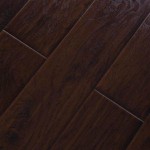Essential Aspects of Installing LVT Flooring
Luxury vinyl tile (LVT) flooring has become increasingly popular due to its durability, affordability, and ease of installation. However, like any flooring project, proper installation techniques are crucial to ensure a long-lasting and aesthetically pleasing result. This article will highlight the essential aspects to consider when installing LVT flooring.
1. Preparation and Planning
Before starting installation, thoroughly clean the subfloor and ensure it is level and moisture-free. Use a moisture meter to measure the moisture levels, which should be below 12% for LVT installation. Plan the layout of the tiles to minimize waste and achieve a cohesive design.
2. Underlayment
Underlayment is essential to provide a stable base, reduce sound transmission, and improve the comfort of the flooring. Choose an underlayment specifically designed for LVT and follow the manufacturer's instructions for installation.
3. Installation Methods
LVT flooring can be installed using three primary methods: glue-down, floating, and loose-lay. Glue-down involves adhering the tiles directly to the subfloor using an adhesive. Floating installation employs a locking system to connect the tiles, creating a floating floor that can be installed over existing surfaces. Loose-lay flooring features a self-adhesive backing that allows the tiles to be easily placed and removed.
4. Expansion Gap
When installing LVT flooring, it is crucial to leave an expansion gap around the perimeter of the room. This gap allows the flooring to expand and contract with temperature and humidity fluctuations, preventing buckling or damage.
5. Cutting and Fitting
Precise cutting is essential to ensure a professional finish. Use a sharp utility knife or a laminate cutter to make clean, straight cuts. Fit the tiles tightly together, leaving minimal gaps. For irregular cuts, such as around corners or obstacles, use a coping saw or jigsaw.
6. Transitions and Moldings
Transitions are used to create smooth connections between different flooring surfaces or rooms. Choose transitions that complement the LVT flooring and install them according to the manufacturer's guidelines. Moldings provide a finished look to the flooring, concealing expansion gaps and enhancing the overall aesthetic.
7. Cleaning and Maintenance
Once the LVT flooring is installed, it is essential to clean it thoroughly using a neutral cleaner. Regular maintenance involves sweeping, vacuuming, or mopping the floor with a pH-neutral cleaner. Avoid abrasive cleaners or harsh chemicals that can damage the flooring.
Conclusion
Installing LVT flooring is a rewarding project that can significantly enhance the look and feel of your home. By following the essential aspects outlined above, you can ensure a successful and professional-looking installation. From preparation to maintenance, understanding these factors will help you create a durable and stylish flooring solution that will last for years to come.

Installing Vinyl Plank Flooring How To Fixthisbuildthat

How To Install Lvt Lvp Flooring 4 Easy Steps America

How To Install Vinyl Plank Flooring As A Beginner Home Renovation

How To Install Vinyl Plank Flooring In A Bathroom Fixthisbuildthat

How To Install Luxury Vinyl Flooring Invictus

How To Install Vinyl Plank Flooring As A Beginner Home Renovation

How To Lay Lvt Flooring A Step By Guide Factory Direct

Laying Vinyl Planks The Right Way Expert Guide By Fantastic Handyman

Installing Vinyl Floors A Do It Yourself Guide The Honeycomb Home

How To Install Luxury Vinyl Plank Flooring Wood
Related Posts








